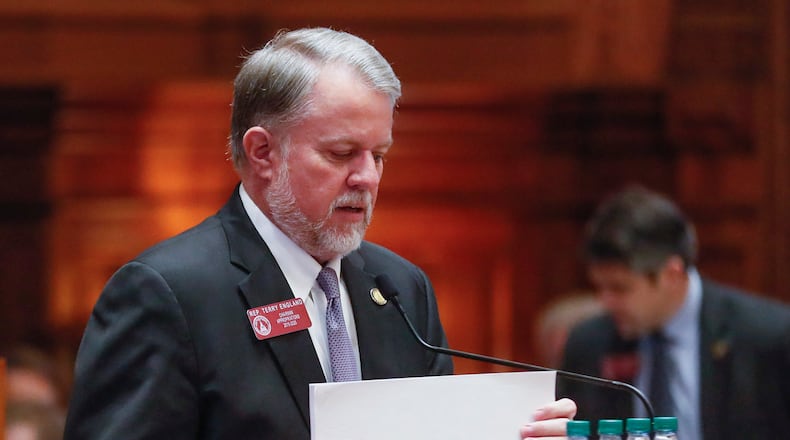State House and Senate leaders agreed Thursday on a final budget for the upcoming fiscal year that cuts $950 million in basic k-12 school funding but doesn’t force state agencies or the University System of Georgia to furlough staffers.
That is big news for more than 100,000 state and university staffers, some of whom were expecting to have to take weeks off without getting paid.
The $26 billion spending plan for fiscal 2021 - which begins Wednesday - cuts spending $2.2 billion to meet the expected decline in revenue due to the coronavirus pandemic recession.
Live: Track major Georgia bills and see odds of passing
But budget writers also eliminated or mitigated some of the most talked about proposed reductions - including furloughs for tens of thousands of state employees, from state patrolmen to public health workers who have spent the past three months battling the pandemic.
They also lessened some of the cuts to mental health and substance abuse programs, an area particularly hard hit by earlier budget plans.
House Appropriations Chairman Terry England, R-Auburn, said Gov. Brian Kemp's recent estimate - which showed the revenue drop wouldn't be quite as bad as earlier expected - allowed budget writers to keep from having to ask employees to take days off without pay.
Lawmakers and agencies had originally planned for 14% cuts, but Kemp reduced the figure to 10%, in part by agreeing to pour about $250 million in reserve funds into the state budget.
That helped mitigate what agencies had to cut.
The pandemic brought record unemployment, and thousands of businesses either closed or still struggle to remain open. That, in turn, has sent state tax collections — mostly for income and sales taxes — plummeting.
Because the state expects less revenue, lawmakers have faced cutting funding for everything from k-12 schools and universities to the Georgia Bureau of Investigation, food safety inspections, highway construction, mental health and substance abuse programs, and county health departments.
The difference between a 14% cut originally proposed and 10% is about $1 billion.
The state spends more than half of its tax money on schools - k-12, universities and technical colleges.
While basic k-12 school funding would be cut $950 million, programs designed to provide more money for low-wealth districts would increase.
Still, some school districts - particularly in rural areas with little property tax base - will face tough decisions. During the Great Recession, some of them laid off and furloughed teachers, eliminated programs and shortened the school year.
Some school advocates have pushed the General Assembly to approve tax hikes on cigarettes and reduce business tax breaks to increase revenue in an effort to avoid cutting education. Lawmakers have so far not done so.
"Our Legislature had the opportunity to spread the sacrifice around and look at ways to increase revenue, but instead they again decided to balance the budget on the backs of our children's' education," said John Palmer, a Cobb County educator and spokesman for the teacher group TRAGIC.
"This senior class will graduate having endured over $10 billion in austerity cuts," Palmer said. "They deserve better from our Legislature."
But House Speaker Pro Tem Jan Jones, R-Milton, said most school systems have reserves to make up the cuts. Schools also received big money from the federal government in the federal CARES Act passed at the start of the pandemic.
Jones said she doesn’t expect students to notice any difference in their schools because of the state funding cuts.
Budget writers also eliminated plans to cut grants to county health departments.
Kemp asked budget writers to includes $15 million to establish a grant program to pay for better training for state and local law enforcement, and $2.47 million for a new state trooper class in the upcoming year.
The governor also recommended lawmakers approve borrowing an additional $139 million for maintenance and repair work at state facilities, state-owned railroads and bridges to address infrastructure needs.
The budget approved by the Senate last week already included about $1 billion in borrowing for construction projects, much of it for schools and colleges.
About the Author
Keep Reading
The Latest
Featured




